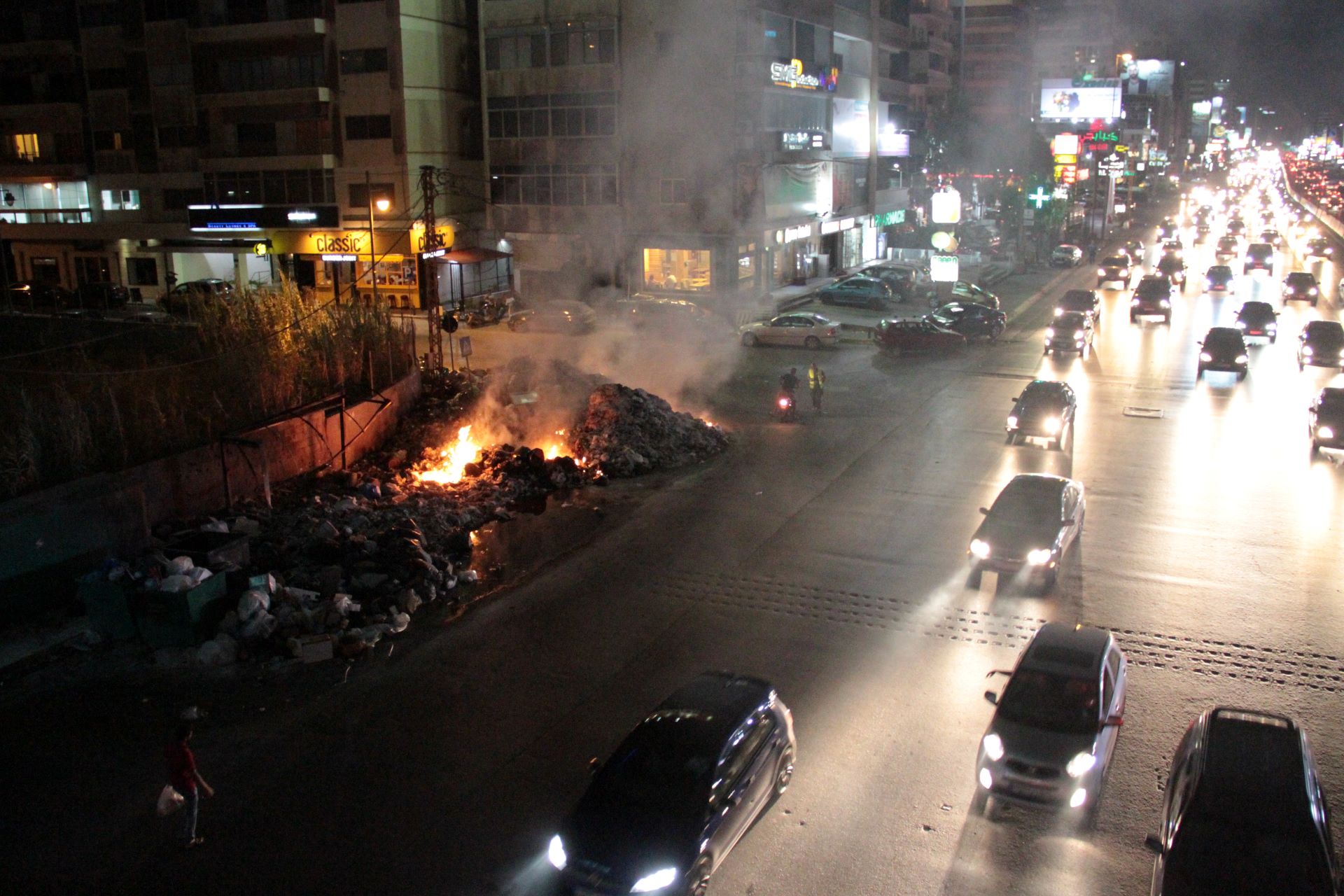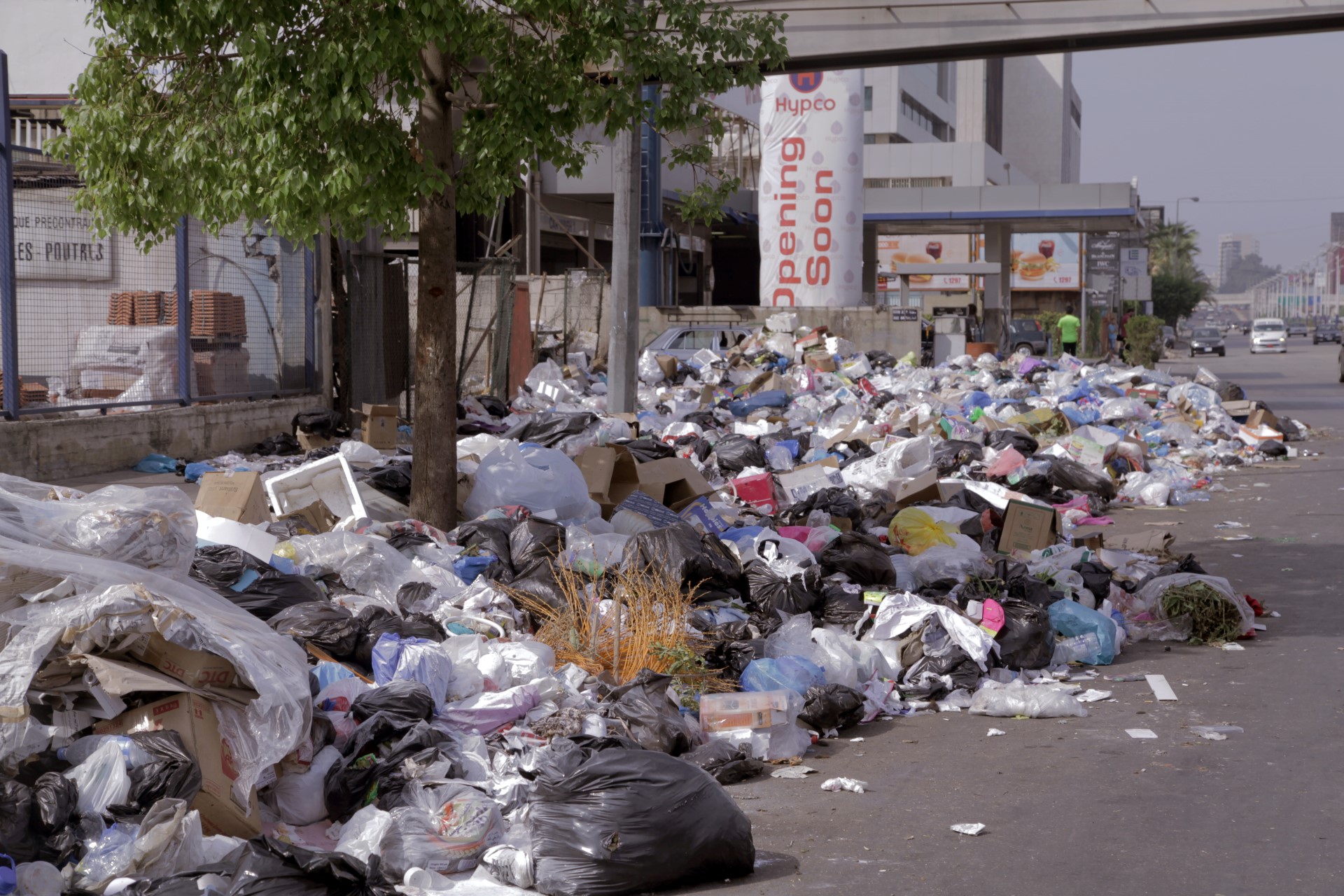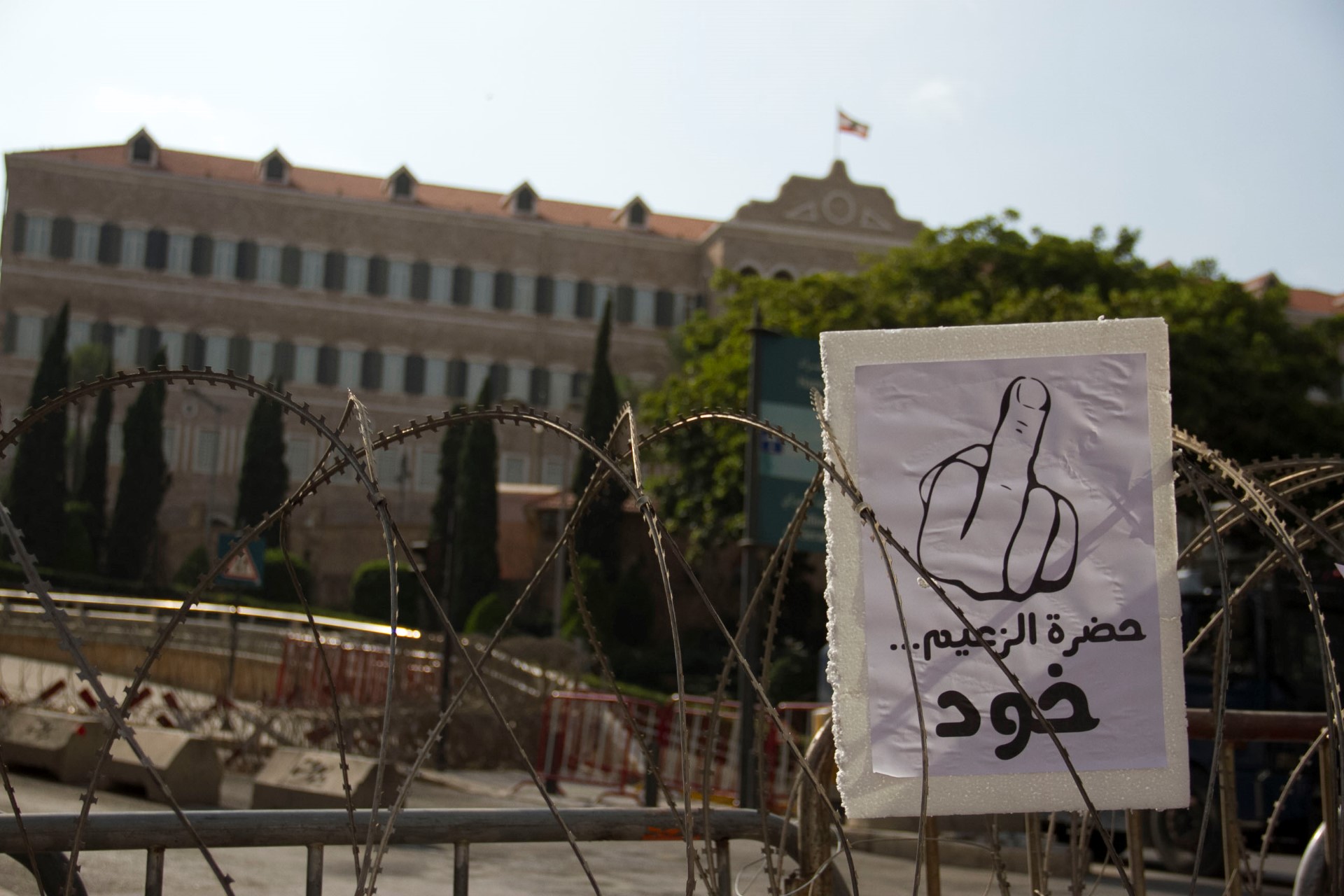Lebanon’s Garbage Crisis
Waste piling to the sky, bins overflowing into the street, feeding the fires that choke the city; masked pedestrians scurrying about the streets, attempting to protect themselves from the stench and the bacteria, traversing the mountains of garbage between gulps of air. This was a typical scene of the streets in Beirut, the summer of 2015, when a garbage crisis swept the Lebanese capital. This scene continues today.
Leading up to this crisis, the Naameh landfill was receiving unseparated and untreated waste from Beirut and the surrounding areas near Mount Lebanon. It would be nice to report that the garbage problem was the first of its kind, but this is simply not the case. The Naameh dumpsite was created as a contingency solution to an emergency sparked in 1997 when residents living near another landfill called Bourj Hammoud broke into protest, effectively closing the site.
Garbage piled high in the streets until Naameh was opened. This emergency solution was intended to be a temporary quick fix, with the promise that by 2003, the government would develop a proper national waste management plan and close the landfill. This however, was continuously postponed by the authorities and eventually led the facility to continue its operation for nearly two decades following.

The residents of Naameh protested the landfill in their neighbourhood on different occasions, and each time they were pacified with promises that the landfill would get closed. New deadlines were set, but never met. However, on July 17, 2015, a new protest erupted which could not be suppressed, and residents ensured that their demands were met. With the immediate closure of the landfill and no alternative proposal from the government, waste quickly began to accumulate in Beirut and Mount Lebanon. This marked the start of the 2015 garbage crisis.
It did not take long until the citizens of these communities joined in protests of this unsanitary and environmental catastrophe. Soon, the residents of other Lebanese cities joined, demanding a proper treatment of their waste. At the same time, many used the opportunity of this growing social movement to demand proper access to electricity, safer public spaces, a crackdown on corruption, and a transition to a secular politics over the prior sectarian system.
Solid waste mismanagement in Lebanon
Lebanon has a long history of waste mismanagement. Throughout the years of the Lebanese Civil War (1975-1990), all waste including the huge amounts of construction debris from large scale demolition of buildings, was dumped offshore, extending the shores of Beirut.
When the war came to an end, this accumulated mountain of garbage was transformed into an artificial coastline and became a valuable piece of land, creating lucrative possibilities for real estate investment. Waste management was then centralized by the government and the waste collection and disposal services were outsourced to private companies.
In 1994, the Council of Ministers contracted a private company called Sukleen to provide solid waste management services for Beirut, even though the Municipality of Beirut had already developed a waste management plan of their own. This plan was projected to have cost half of the amount requested in the bid by Sukleen, but strangely, the municipal government proceeded with the private option. The company continuously expanded its service area, eventually including the areas of Mount Lebanon, and throughout the years their contracts were consistently renewed, despite exponential cost increases.
The usage of the dumpsite was suspended in 1994; by that time, the landfill had reached a volume of 5 million m³.
The rate which the government came to pay for waste collection and disposal services eventually reached $147 per ton in 2015. This is double the global rate of $75 per ton and the regional average of around $40 per ton. In the post-war years, the government created a mechanism known as the “independent monetary fund” which was created to support financially weak municipalities. This system would have allowed the municipality of Beirut to select the best practice for needs and distribute money from the government appropriately. This system however, was bypassed due to the centralization of Beirut’s waste management planning, and led the Lebanese treasury to pay Sukleen directly for their services.
This contract between the government and Sukleen is illegal, as the right and duty of the municipalities to organize solid waste collection and disposal is being bypassed. It is evident that in the unrest of Lebanese Civil War when waste management was all but non-existent, a market opportunity arose and certain political ties were exploited. The head of Sukleen, Maysara Sukkar, acknowledged in an interview with Lebanese newspaper The Daily Star, the necessity of political ties in the success of his business.

The date of July 17, 2015 had been set by the Lebanese government for the closure of the Naameh landfill. The same day marked the expiration of the Sukleen waste management contract as well, though the government asked Sukleen to continue to provide its services, despite a huge public outcry against the mistrusted company. The garbage crisis proved to be a good excuse to extend Sukleen’s contracts as there was no alternative dumpsite nor service provider. No other company had the means, expertise, or equipment to substitute Sukleen. This, combined with the urgent character of the crisis, made other companies ineligible candidates for service provision.
However, closer scrutiny revealed that exploring alternative solutions to the Naameh landfill, or Sukleen’s services had never been the government’s intention to begin with. The government launched a call for bids in 2015, for which the tendering companies had to provide vehicles and a dumpsite. Yet, with only short-term contracts being offered by the government, these competing companies would never have had the possibility to recover their investments.
The garbage crisis proved to be a good excuse to extend Sukleen’s contracts, as there was no alternative to a dumpsite.
This injustice is readily apparent when examining the history of Sukleen as a company, which was provided with both vehicles and a dumpsite when it started its services in the 1990s. In the end, the bidding was cancelled due to the outbreak of the garbage crisis and the social movement it resulted in.
Out of sight, out of mind?
The protests grew to be a vast social movement of tens of thousands of people who descended into to the streets during these chaotic days and weeks as the garbage crisis peaked. It was and still is very difficult however to protest one specific government authority, or political figure responsible for waste management because the division of labour is so fragmented within the government.
The municipalities have the right and duty to deal with their waste, and the Ministry of Interior and Municipalities has jurisdiction over the waste sector as it is represented on the national level. The Ministry of Environment also has jurisdiction over this sector.

The Ministry of Environment has been elaborating on waste management plans in the past years with the help of the United Nations Development Programme (UNDP). None of these plans, however, have been put into practice. In July 2006, a war broke out with Israel which resulted in a lack of funding for the waste management plan launched that year. Also, a plan proposed in 2010 included incinerators and the burning of trash, which was opposed by the public.
The Office of the Minister of State for Administrative Reform (OMSAR) has also played a role in the solid waste sector. It has executed and financed (through the European Union – EU) several solid waste projects and awareness campaigns.
Although there are many parties involved, their responsibilities are not clearly defined, making the elaboration of a proper waste management plan difficult.
Although there are many parties involved, their responsibilities are not clearly defined, making a proper waste management plan difficult. In addition to the EU and the UN, there are many international organizations and donors who are involved in waste management in Lebanon, such as the World Bank and development agencies from countries such as Italy, who have launched waste management projects in the country. Unfortunately, none of these foreign funded projects have shown real success.
This lack of clearly assigned responsibilities between these organizations makes it difficult to write a properly defined law for waste management. As there are many different entities involved, none of them can be held fully accountable for crises like the one the country is currently facing. Each authority points fingers to the next, and none of the government agencies take responsibility worsening crisis.

Although this situation reached its literal in peak in 2015 when the garbage accumulated into mountains in the streets, the history shows that Lebanon has been plagued by garbage crises for the past two decades or more.
The social movement and the parties arising from it provide hope for the people who are still facing the Lebanese garbage crisis.
Despite recent improvements, the garbage crisis is continues today, and waste is still not properly treated. All sorts of waste, consisting of medical, industrial, household and more, are dumped together without treatment. Today, the waste of Beirut and Mount Lebanon is deposited in two coastal areas close to the capital: Bourj Hammoud and Costa Brava. This seems to be a recurrent solution, reminiscent of the year following the Civil War when the coast and sea were abused to enlarge the capital. While the waste management in the cities has improved, citizens continue to protest the garbage crisis, corrupt government and the poor services, though on a much smaller scale.
This social movement resulted in the rise of new parties that challenged the nativist political figures in the municipal elections taking place in May 2016. Though the new parties did not win the election, their support was very large considering that their formation preceded the election by only a couple of months. Thus, the election clearly showed the discontent in the population with the political system of the country. The social movement and the parties arising from it provide hope for the lives of people still impacted by the Lebanese garbage crisis.